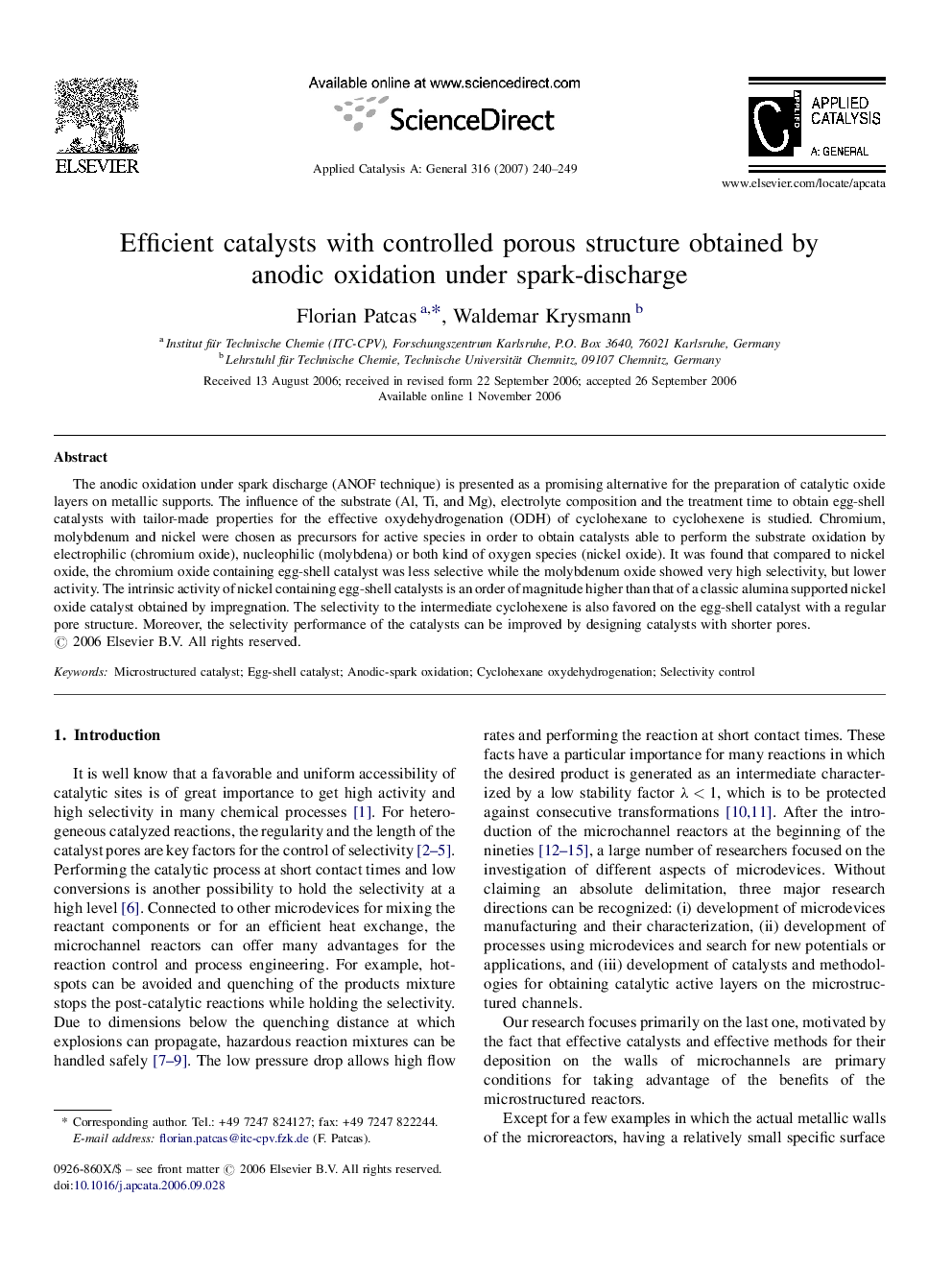| Article ID | Journal | Published Year | Pages | File Type |
|---|---|---|---|---|
| 43832 | Applied Catalysis A: General | 2007 | 10 Pages |
The anodic oxidation under spark discharge (ANOF technique) is presented as a promising alternative for the preparation of catalytic oxide layers on metallic supports. The influence of the substrate (Al, Ti, and Mg), electrolyte composition and the treatment time to obtain egg-shell catalysts with tailor-made properties for the effective oxydehydrogenation (ODH) of cyclohexane to cyclohexene is studied. Chromium, molybdenum and nickel were chosen as precursors for active species in order to obtain catalysts able to perform the substrate oxidation by electrophilic (chromium oxide), nucleophilic (molybdena) or both kind of oxygen species (nickel oxide). It was found that compared to nickel oxide, the chromium oxide containing egg-shell catalyst was less selective while the molybdenum oxide showed very high selectivity, but lower activity. The intrinsic activity of nickel containing egg-shell catalysts is an order of magnitude higher than that of a classic alumina supported nickel oxide catalyst obtained by impregnation. The selectivity to the intermediate cyclohexene is also favored on the egg-shell catalyst with a regular pore structure. Moreover, the selectivity performance of the catalysts can be improved by designing catalysts with shorter pores.
Graphical abstractThe anodic oxidation under spark discharge (ANOF technique) is presented as a promising alternative for the preparation of catalytic oxide layers on metallic supports. The influence of the substrate (Al, Ti, and Mg), electrolyte composition and the treatment time to obtain egg-shell catalysts with tailor-made properties for the effective oxydehydrogenation (ODH) of cyclohexane to cyclohexene is studied. Figure optionsDownload full-size imageDownload as PowerPoint slide
